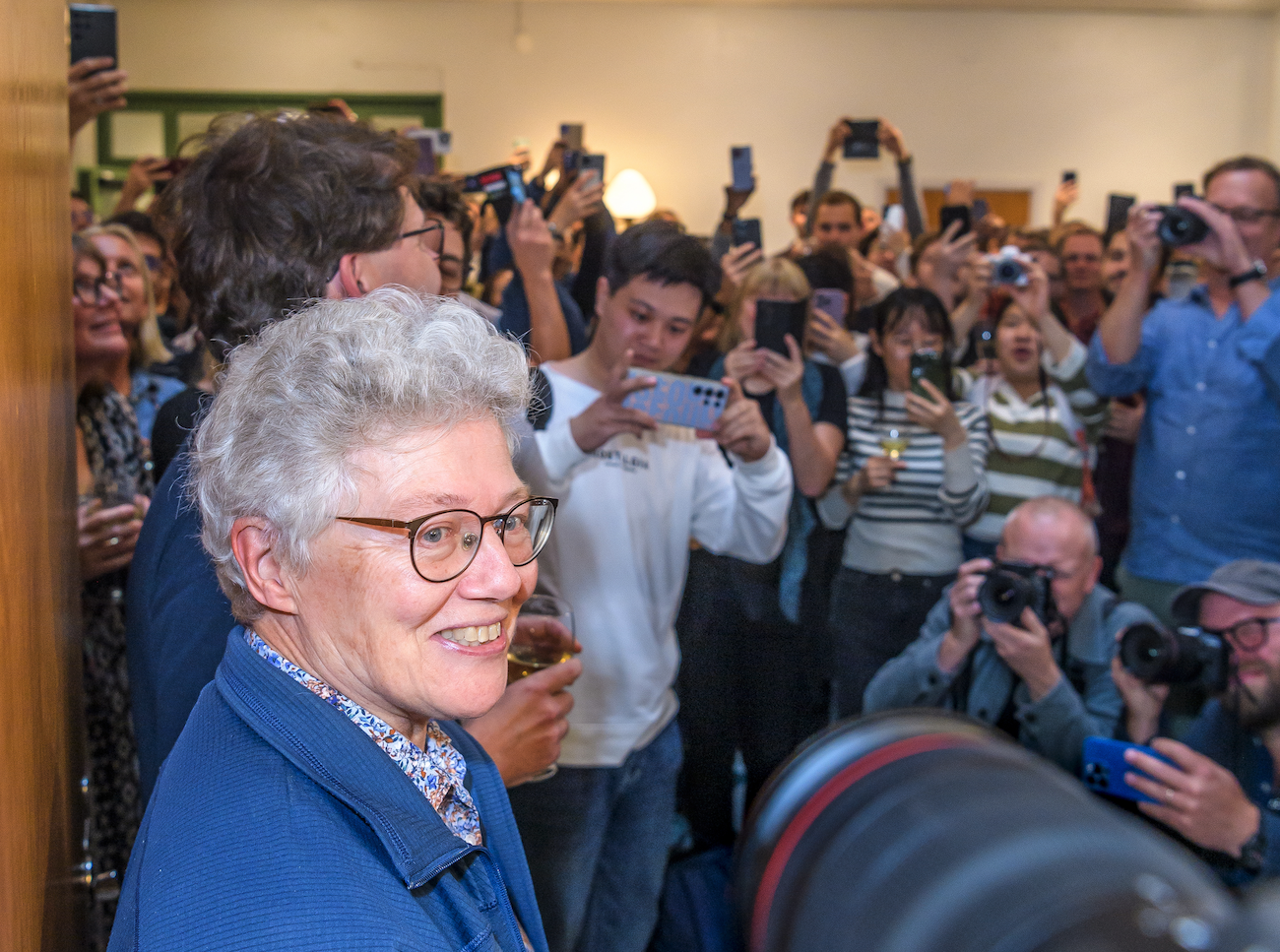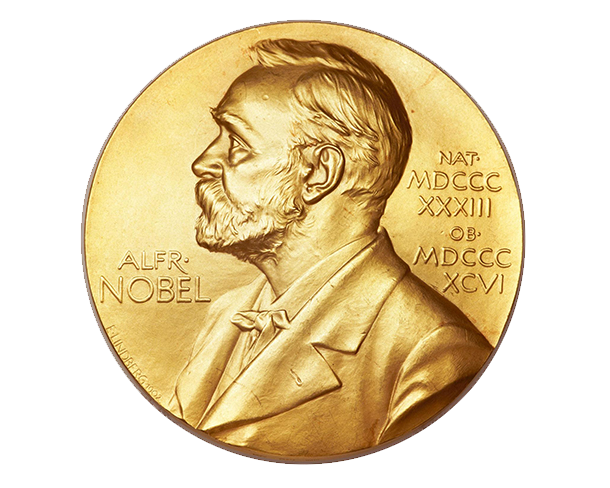“Follow your intuition. That's my advice"
Anne L'Huillier, Professor of Atomic Physics at LTH, Lund University, was awarded the Nobel Prize in Physics together with Pierre Agostini and Ferenc Krausz on Tuesday. “It feels absolutely incredible. Fantastic! I am very proud”, she says.
Jonas Andersson – Published 4 October 2023

Anne L'Huillier received the news that she had been awarded the Nobel Prize in Physics during a lecture. Her phone rang, but it was only during a break in teaching that the Royal Swedish Academy of Sciences got hold of her and was able to break the news.
“After I got the news, I went back in and continued my class. I did have to tell the students that we would be wrapping up slightly early, as I had to be in my office at 11.45. I didn't say anything else, but I think some of them might have understood what was going on. I then resumed the lecture for another half-hour. It was quite tough, I must say”, Anne L'Hullier said during Tuesday's press conference at the Physics department at Lund University.
The prize was awarded for "experimental methods that generate attosecond pulses of light for the study of electron dynamics in matter”. With laser technology, ultra-short light pulses are created that make it possible to look into the microcosm. These "camera flashes" enable the study of the movements of electrons inside atoms and molecules.
Many years of work behind the award
For Anne L'Huillier, this work began in 1987 when she discovered that a large number of different harmonics of light arose when she transmitted infrared laser light through a noble gas. These come to be because the light from the laser interacts with atoms in the gas, giving some electrons extra energy, which is then emitted as light.
“Back then, I never thought that this could lead to a Nobel Prize one day. I wanted to keep looking into this, as I saw a possibility that it could be attosecond pulses. It went against what others thought. But my intuition told me that there could be opportunities to create something that would lead me onwards”, says L’Huillier.
So – the theory was in place, but measurements proved difficult. This changed in 1991, when Pierre Agostini and Ferenc Krausz each managed to set up experiments where they could measure short light pulses on the attosecond time scale.
Made the impossible possible
The technology made it possible to follow incredibly fast processes, something that is necessary when it comes to electrons, as their changes take place in time frames of tens of attoseconds. Furthermore, electrons are not particles in the classical sense – they are more of a wave – and attosecond physics is about describing and characterizing, these waves.
The field still consists of basic research. In the future, Anne L'Huillier hopes that it will be possible to follow electron movements in more advanced systems, such as complex molecules.
“For example, I want to better understand what happens at the beginning of a chemical reaction. If that understanding improves, you can then measure what is happening and potentially also control the process. That is the vision. An application we are working on now is how to use radiation to create images of very small structures, which could be used in the semiconductor industry”, says Anne L’Huillier.
One of few female Laureates in Physics
Anne L'Huillier is the fifth woman to receive the Nobel Prize in Physics, something she is particularly happy about.
“Physics is the subject that has had the fewest female prize winners, so it is important. However, the ratio is increasing, and I think it will increase even more in the future. I'm quite optimistic.”
Her advice for young researchers is that it is good to have passion, to enjoy what you do, and to have a desire to understand and improve.
“Follow your intuition. That's my advice. If you have a passion for science: go for it! This applies especially to young women. It is possible to combine a research career with an ordinary life with a family and children. It's possible if you want it”, she says.
At Tuesday's press conference, a question addressed whether or not it is an advantage to pursue a career as a female researcher in Sweden compared to other countries.
“That is a very difficult question, and the answer is both yes and no. Yes, because we have a very good system when it comes to child care, and that there is acceptance from society that you can both have children and pursue a career. No, because there are very few women working in physics, and in many other countries there are more, so in that way it is easier there. My hope and belief is that it will increase, and that there will be more and more women in physics, mathematics and technology”, says Anne L'Huillier.
What is your goal going forward now that you have won the most prestigious prize that can be won?
“The next step is to stay where I am, regardless of what has happened today. My goal is to continue researching and teaching, and to continue being myself.”
More about the Nobel Prize in Physics 2023 on Kungliga Vetenskapsakademiens page

Nobel Prize in Physics 2023
Pierre Agostini, PhD 1968 from Aix-Marseille University, France. Professor at The Ohio State University, Columbus, USA.
Ferenc Krausz, born 1962 in Mór, Hungary. PhD 1991 from Vienna University of Technology, Austria. Director at Max Planck Institute of Quantum Optics, Garching and Professor at Ludwig-Maximilians-Universität München, Germany.
Anne L’Huillier, born 1958 in Paris, France. PhD 1986 from University Pierre and Marie Curie, Paris, France. Professor at Lund University, Sweden.
